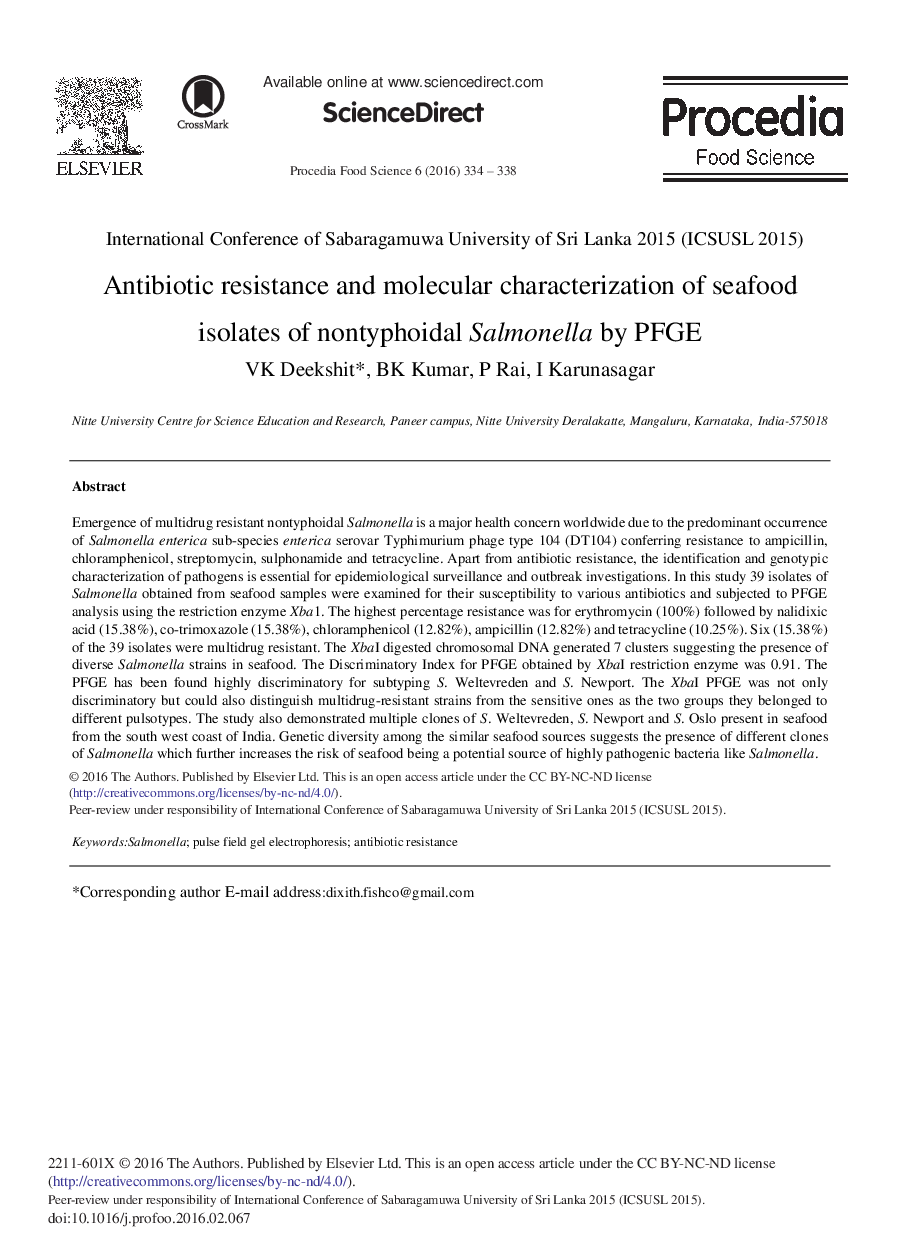| Article ID | Journal | Published Year | Pages | File Type |
|---|---|---|---|---|
| 1266233 | Procedia Food Science | 2016 | 5 Pages |
Emergence of multidrug resistant nontyphoidal Salmonella is a major health concern worldwide due to the predominant occurrence of Salmonella enterica sub-species enterica serovar Typhimurium phage type 104 (DT104) conferring resistance to ampicillin, chloramphenicol, streptomycin, sulphonamide and tetracycline. Apart from antibiotic resistance, the identification and genotypic characterization of pathogens is essential for epidemiological surveillance and outbreak investigations. In this study 39 isolates of Salmonella obtained from seafood samples were examined for their susceptibility to various antibiotics and subjected to PFGE analysis using the restriction enzyme Xba1. The highest percentage resistance was for erythromycin (100%) followed by nalidixic acid (15.38%), co-trimoxazole (15.38%), chloramphenicol (12.82%), ampicillin (12.82%) and tetracycline (10.25%). Six (15.38%) of the 39 isolates were multidrug resistant. The XbaI digested chromosomal DNA generated 7 clusters suggesting the presence of diverse Salmonella strains in seafood. The Discriminatory Index for PFGE obtained by XbaI restriction enzyme was 0.91. The PFGE has been found highly discriminatory for subtyping S. Weltevreden and S. Newport. The XbaI PFGE was not only discriminatory but could also distinguish multidrug-resistant strains from the sensitive ones as the two groups they belonged to different pulsotypes. The study also demonstrated multiple clones of S. Weltevreden, S. Newport and S. Oslo present in seafood from the south west coast of India. Genetic diversity among the similar seafood sources suggests the presence of different clones of Salmonella which further increases the risk of seafood being a potential source of highly pathogenic bacteria like Salmonella.
